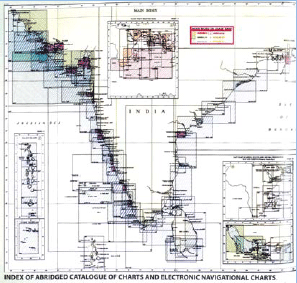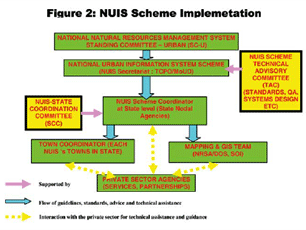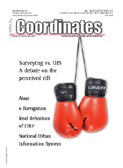
Jack Dangermond, ESRI President receives honor from ASPRS
ESRI president Jack Dangermond has been awarded the American Society for Photogrammetry and Remote Sensing (ASPRS) Outstanding Service Award for 2007. Dangermond is being recognized for his endowment of the ESRI Best Scienti? c Paper in GIS Award. Established in 1991, the award is given each year by the ASPRS Foundation to individuals who publish papers of scienti? c merit that advance the knowledge of GIS.

Pitney Bowes completes ccquisition of MapInfo
Pitney Bowes Inc. announced completion of the acquisition of MapInfo Corporation. Now MapInfo will be called as PB MapInfo Corporation. The merger followed the successful completion by Magellan Acquisition Corp. of a tender offer for all outstanding shares of MapInfo at $20.25 net per share in cash. Pitney Bowes, having 87 years of technological leadership, provides the world’s most comprehensive suite of mailstream software, hardware, services and solutions to help companies manage their fl ow of mail, documents and packages to improve communication. www.pitneybowes.com.

To create no residual global rotation with regards to the crust in time evolution in orientation, IERS in the first ITRF88 retained the BIH Conventional Terrestrial System (CTS) and its Conventional Terrestrial Pole (CTP) 1984.0. Since then, it has realized the same “Pole”. However, IERS changed the name “CTP” to International Reference Pole (IRP).
Historical Start
The Earth’s first Terrestrial Reference Frame (TRF) was called Conventional International Origin (CIO) 1905 where the mean orientation of the Z-axis was defi ned by International Latitude Service from six years of observations between 1900 to 1905 (Note: There is NO other “CIO” ever defi ned). The records are not clear whether ILO ever provided a specifi c defi nition for the X-axis and/or the zero meridian.

Mission of National Geographic?
The mission on National Geographic is “the increase and diffusion of geographic knowledge” taken more broadly it also entails inspiring people to care about the planet.
What kinds of maps are prepared? What’s so unique about them?
We create a variety of political, thematic, physical, and topographic maps. With few exceptions …

What is the potential of high resolution imageries?
There has been a great increase in awareness about high resolution satellite and aerial imagery. The credit goes to the players like Microsoft Virtual Earth, Yahoo, and Google Earth. In many countries nowadays, even kids talk about on-line imagery and maps. It is bringing …

Government of India, Ministry of Finance, Department of Revenue, Central Board of Excise & Customs
Sub: Clarification in respect of classification of higher technology featured mobile / cellular handset or telephones – regarding.
Board has received certain representations from the trade and industry regarding classification of higher technology featured mobile / cellular handsets or telephones, which contain GPS features apart from other functions like music, camera, voice recording, e-mail, internet and related editing features. Field formations have also requested to issue a clarification in the matter of classification of a hybrid product containing PDA, mobile phone with camera and GPS, which are being imported presently.

World Hydrographic Day is being celebrated on the 21st June every year to commemorate the establishment of the International Hydrographic Bureau by 19 member states in 1921 at the Principality of Monaco at the invitation of HSH Prince Albert I, a noted marine scientist and oceanographer, who had graciously offered the requisite space and facilities free of cost. In 1970, it was renamed as the International Hydrographic Organisation (IHO) and has presently 80 Member States, covering the vast majority of Ocean States. IHO plays a very useful role in Standardisation, International Charts, Capacity Building and Technical Cooperation, Education and Training, Hydrographic Surveying, Charts (paper and digital), Regional Hydrographic Commissions, Cooperation with other International Organisations, Tsunami Information, and nautical Publications.

State of the art global communication technologies and thriving economy is facilitating Indian cities to compete in the global environment. The constant transformation of urban areas into complex entities has brought forth new challenges and opportunities for Planners to design and implement a variety of activities in spatial terms. There is need to tread common ground so as to address problems and issues in the right perspective to assist cities in coping with economic realities and thereby produce high quality responsive environment and demonstrate successful urban solutions.












 (5.00 out of 5)
(5.00 out of 5)